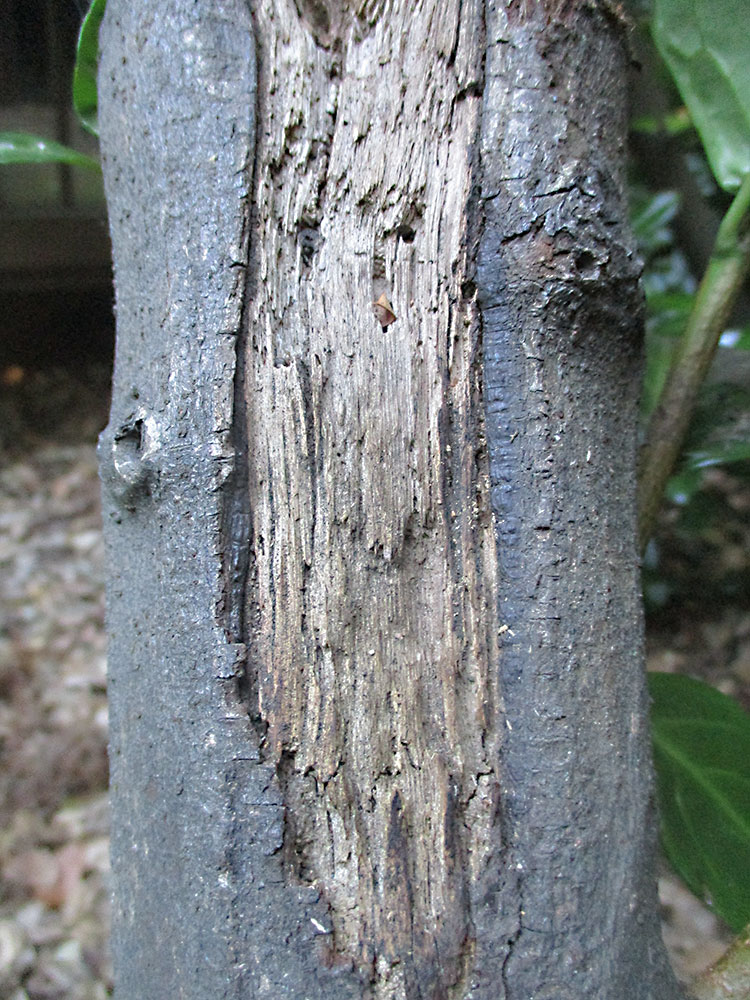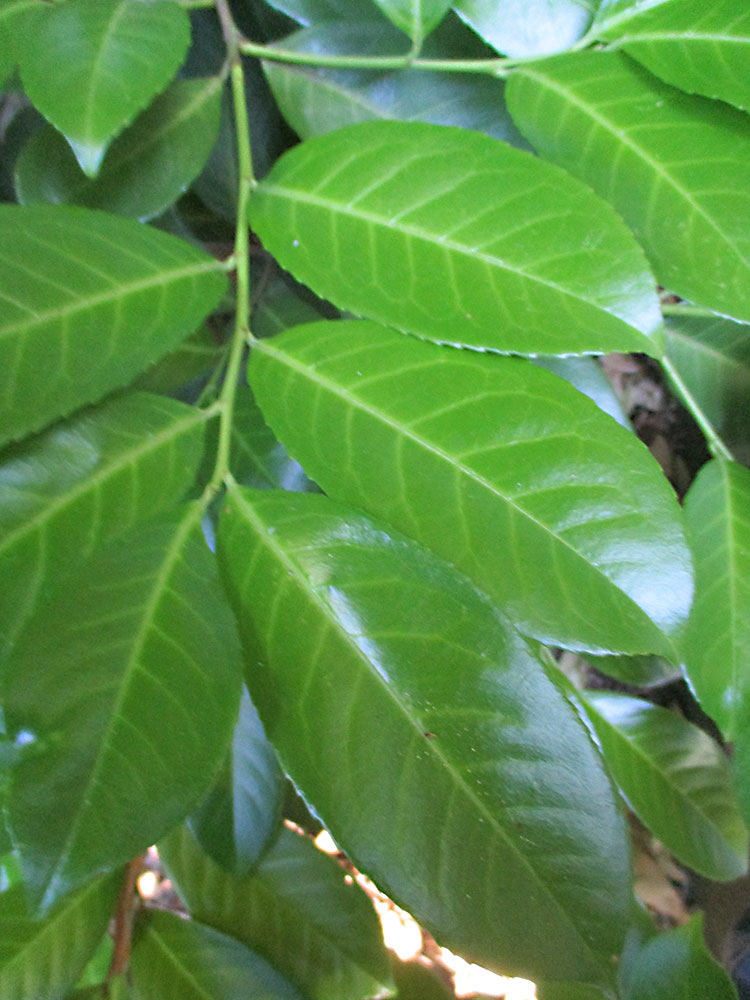By Tony Tomeo
Those who enjoy gardening where winter weather is harsh likely know what sun scald is. It happens late in winter, if exposed bark warms enough to prematurely resume vascular activity during the day. Vascularly active tissue then succumbs to hard frost at night. Wintry sunlight is not sufficiently intense to scald bark; but the damage suggests otherwise. Glare from snow enhances exposure.
Of course, without hard frost or snow, this sort of sun scald is not a concern here. However, there is another sort of sun scald that happens during the warmth of summer. It truly is scald, caused by exposure to sunlight that is sufficiently intense to literally cook vascular tissue just below thin bark. Although induced by opposite extremes of seasonal weather, the damage is remarkably similar.
Since even deciduous trees are foliated during summer, most bark is safe from summertime sun scald. Bark becomes more exposed and susceptible if deprived of some of what shades it. That can easily happen if aggressive pruning diminishes the foliar canopy above. Removal of a nearby tree also eliminates significant shade. Painting an adjacent wall a light color can enhance glare.
White paint applied to the trunks of susceptible orchard trees reflects most of the damaging sunlight, but is too unsightly for landscape trees. Stubble of small twiggy stems can shade the trunks of some young trees until their canopies are broad enough to provide shade. Sun scald typically develops on southwestern and upper exposures that are more exposed to the most intense sunlight.
Maple, oak, ash, birch, flowering cherry, flowering crabapple, English walnut and almost all deciduous fruit trees are innately susceptible to sun scald. The interior stems of privet, holly and English laurel are more resilient to sun scald if exposed by major pruning during late winter rather than during summer. Although, with only a few exceptions, any thin bark can be susceptible to sun scald.
Foliage of many plants can be damaged by enhanced exposure too, but that is known as ‘scorch,’and is another topic.
•••
Cherry Laurel
Victorian landscapes made good use of cherry laurel, Prunus laurocerasus. It works well as a large formal hedge. For more relaxed modern landscapes, it makes delightful informal screen. The main reason that it is now less popular than other hedging shrubbery is that it gets rather broad if not shorn back regularly. If allowed to grow as a low rounded tree, it can get twenty-five feet high!
Regularly shearing is not necessarily frequent. It should be efficient though. Confinement for such broad shrubbery is important. If shorn back farther than where the outer surface is desired late in winter, fresh new foliage can fluff out nicely within allowable space through spring. Subsequent aggressive shearing to maintain confinement may only be necessary once or twice during summer.
The big leaves are about three inches long, and luxuriantly glossy. If hedges get shorn less aggressively, but more frequently than two or three times annually, such big leaves can be rather shabby much of the time. If shorn less frequently, small trusses of creamy white flowers may get a chance to bloom. Cultivars are more compact than the species. One cultivar is variegated with pale gold.
•••
Horticulturist Tony Tomeo can be contacted at tonytomeo.com.




